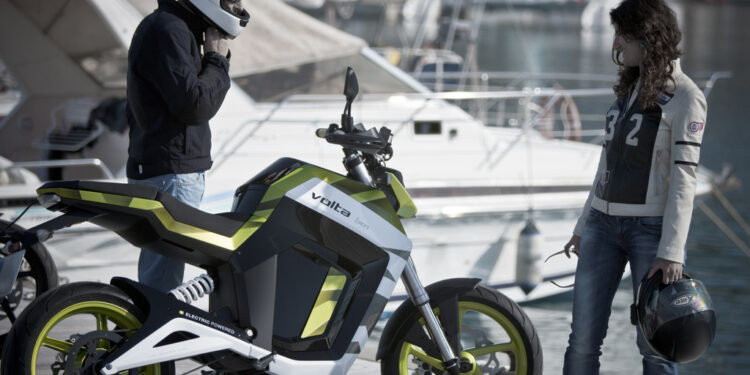In the heart of our bustling cities, urban motorcycling emerges not just as a mode of transport but as a symbol of efficiency and freedom against the backdrop of ever-growing urban congestion. Motorcycles, weaving through the complex tapestry of urban life, offer an alternative rhythm to city traffic’s dense, static pulse.
This exploration delves into the multifaceted role of motorcycles within the urban ecosystem, scrutinizing their impact on traffic flow, environmental sustainability, and the evolving legal and cultural landscapes that frame their existence in city streets.
The Urban Advantage: Motorcycles in City Traffic
Urban landscapes present a unique set of challenges and opportunities for motorcyclists. The agility of motorcycles turns the urban challenge of congestion into an advantage, providing a solution that is not only time-efficient but also contributes positively to the fluidity of city traffic. Let’s unpack the benefits of urban motorcycling, emphasizing its role in addressing critical urban mobility issues.
Reduced Traffic Congestion
Motorcycles contribute significantly to alleviating urban traffic congestion. Their ability to navigate through traffic reduces the space occupied on the road, translating into smoother traffic flow and less congestion.
Economic and Environmental Efficiency
Beyond the practical benefits of navigation and parking, motorcycles present an economically viable option for city dwellers. They are generally more fuel-efficient than cars and, as such, can offer a lower carbon footprint per kilometer traveled, aligning with broader environmental goals for reducing urban pollution.
Enhanced Accessibility
Motorcycles enhance the accessibility of urban spaces. They enable riders to explore parts of the city that might be less accessible to larger vehicles, promoting a deeper connection with the urban environment and its diverse communities.
Environmental Impact: A Double-Edged Sword
The environmental implications of urban motorcycling are complex. While motorcycles offer certain environmental advantages over cars, the picture varies widely based on factors such as the type of motorcycle, its fuel efficiency, and the emissions standards it meets. Here we can delve deeper into these nuances, offering a balanced view of motorcycles’ environmental footprint.
Transition to Electric Motorcycles
The shift towards electric motorcycles is a game-changer for urban environmental sustainability. Electric models promise to drastically reduce emissions and noise pollution, making urban motorcycling an even more attractive option for eco-conscious commuters.
Lifecycle Emissions and Manufacturing
The environmental impact of motorcycles extends beyond tailpipe emissions to include the energy and resources consumed in manufacturing. A comprehensive assessment of their environmental impact must consider these factors, driving innovation towards more sustainable production practices.
One of the most debated aspects of urban motorcycling is lane splitting, where motorcycles navigate between lanes of slow-moving or stopped traffic. The legality of lane splitting varies widely, reflecting diverse regional attitudes and safety considerations.
California
Recognized for formally legalizing lane splitting, setting a precedent for safety guidelines and rider conduct.
Arizona
Offers an intriguing legal perspective, with recent discussions around motorcycle lane splitting legality highlighting the dynamic nature of road safety laws. This evolving legal framework reflects a growing recognition of motorcycles’ role in urban traffic management.
European Examples
Countries like Belgium and the UK have long accepted lane splitting (or Filtering), incorporating it into their road safety regulations, demonstrating a balance between rider freedom and traffic flow efficiency.
Cultural Shifts and Community Engagement
As legal frameworks adapt, so too does the culture surrounding urban motorcycling. There’s a growing movement towards promoting safety, awareness, and mutual respect between all road users. Motorcycle clubs, advocacy groups, and city planners are increasingly collaborating to create a safer, more inclusive urban environment for motorcyclists:
Education and Advocacy
Efforts to educate both riders and non-riders about safe motorcycling practices and the benefits of motorcycles in urban settings are vital. Advocacy groups play a critical role in promoting a positive, responsible motorcycling culture.
Collaborative Urban Planning
Integrating motorcycles into urban planning decisions can enhance their role in the urban transport ecosystem. Collaborative efforts between city planners, motorcycling communities, and other stakeholders are essential for designing cities that accommodate the needs of all road users.
The Road Ahead: Challenges and Innovations
Looking forward, the future of urban motorcycling will be shaped by technological innovations, infrastructure developments, and policy adjustments. Electric motorcycles, smart safety gear, and dedicated motorcycle lanes are just a few examples of how cities can accommodate motorcycles more effectively, ensuring their integration into the urban fabric is both sustainable and safe:
Smart Technology and Connectivity
Advances in smart technology and connectivity offer the potential to improve safety and navigation for urban motorcyclists. From intelligent traffic management systems to connected safety gear, technology is paving the way for a more integrated urban motorcycling experience.
Sustainable Urban Design
The development of motorcycle-friendly infrastructure, such as dedicated lanes and secure parking, is crucial for promoting safe and efficient urban motorcycling. Sustainable urban design principles can guide the creation of spaces that support the diverse modes of mobility that characterize contemporary city life.
Urban motorcycling, with its unique blend of challenges and opportunities, stands as a pivotal element of modern urban mobility. As cities continue to evolve, the integration of motorcycles into the urban fabric offers a pathway toward more efficient, sustainable, and dynamic urban landscapes.
Embracing innovation, fostering cultural shifts towards safety and inclusivity, and navigating the complex legal terrain will be key to unlocking the full potential of urban motorcycling. The road ahead is not without its obstacles, but with thoughtful engagement and forward-looking policies, motorcycles can play a crucial role in shaping the future of urban transport.























